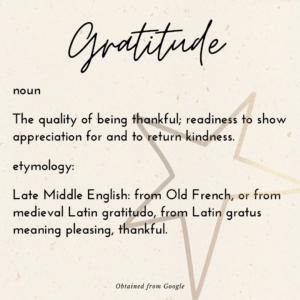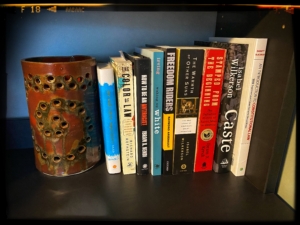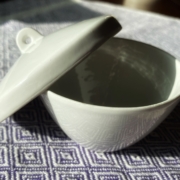Posts
Floor Furnace
/in Ideas, Life/by Catherine HaslagIn the fall of 2009, I was in the middle of a divorce. My 4.5-year marriage had been failing for longer than it had worked. It became apparent to me that this relationship wasn’t what I needed. A friend of mine owned a small rental house that was empty. She lent me the key so I could have a place to go to get away from my soon-to-be-ex-husband and the house we owned while the legal system caught up with what my heart already knew – that the relationship was over.

This is very much like the floor furnace I describe in my blog. Unfortunately, I do not have a photo of that actual floor furnace to share. (image obtained from Pinterest)
This rental house, a small 2-bedroom, 1-bath bungalow, had a floor furnace in the dining room that heated the house. That floor furnace would become my touchstone over the next year.
It is where I sat when I called my mom and told her I was divorcing my husband.
It is where, wrapped in a blanket, I sat and cried about the loss of the life I had known and tried to figure out what I wanted to do next.
It is where I stood each winter morning in my robe to warm myself after I moved into the bungalow and finalized my divorce.
It is where I conducted many hours of conversations with my very patient girlfriends as they helped me navigate the emotional labor of ending a marriage and moving forward with my life.
Its creaks and clicks became the soundtrack of my life while I surveyed the world and planned my next steps as a single woman.
Like a light bulb to a new-born chick, it provided me with physical warmth during an emotionally trying and cold period in my life.
In January 2011, I left the floor furnace and moved out of that bungalow, headed on a northern migration. I had that furnace for just one year, but that was all I needed. I had developed a plan forward and it was time to move on, much like the chick that outgrows its need for warmth from the light bulb.
There are times when we will realize the smallest thing did so much for us – a moment of understanding silence, a book that touched us deeply, a hot cup of tea at just the right time. These are the simple things that make the hard times in life bearable. While things and moments are fleeting, their impact on us lasts a lifetime.
Gold Stars
/in Gratitude Practice, Ideas, Life/by Catherine Haslag A gratitude practice became a part of my life a handful of years ago. At the time I started this practice all I could see was everything that was “wrong” in the world. I was wasting so much energy on what didn’t appear to be “right” and was looking for a way to shift that energy into something productive. Someone suggested that I cultivate a gratitude practice to shift my attitude and view of life. They challenged me to see the flowers on the wallpaper rather than focus on the cracks in the plaster.
A gratitude practice became a part of my life a handful of years ago. At the time I started this practice all I could see was everything that was “wrong” in the world. I was wasting so much energy on what didn’t appear to be “right” and was looking for a way to shift that energy into something productive. Someone suggested that I cultivate a gratitude practice to shift my attitude and view of life. They challenged me to see the flowers on the wallpaper rather than focus on the cracks in the plaster.
I am a researcher, so I started this work by reading a few books on gratitude (365 Thank Yous: The Year a Simple Act of Daily Gratitude Changed My Life and The Gratitude Diaries are two books I recommend on the subject). This led me to add some basic gratitude practices to my life. I started sending thank you notes on a regular basis to my friends and family (the Dollar Store has a good selection of Thank You cards that work perfectly for this). I sent thank-you notes for gifts, phone calls, kind words, friendship, and just to let others know that I thought they were awesome. I also wrote a few things I was thankful for each day in my journal. This helped me to spend time acknowledging the good things present in my everyday life.
As time went on, I started to see all the things there are to be thankful for, even on the crappiest of days. The hot cup of tea in the morning, the car that starts without issue, a clear, star-filled night sky, indoor plumbing on the coldest days during the Minnesota winter. I discovered that there is ALWAYS something to be thankful for and nothing was too small for gratitude. Over time, I realized it was the little things that could get me through the hardest of days.
My gratitude practice has grown over time. Early in the pandemic, a good friend of mine and I started ending our conversations by sharing “good things” in our lives. Hearing what she is thankful for has helped expand my view of all the things available to be grateful for in the world.
 About halfway through lockdown in 2020, I decided to add something else tangible to my gratitude practice, so I brought the gold star back into my life. This was a simple, visible, and slightly quirky way for me to show gratitude to myself and those around me. It was also a way to spread a little childhood joy in the grind of adulthood.
About halfway through lockdown in 2020, I decided to add something else tangible to my gratitude practice, so I brought the gold star back into my life. This was a simple, visible, and slightly quirky way for me to show gratitude to myself and those around me. It was also a way to spread a little childhood joy in the grind of adulthood.
Many of us may be most familiar with the use of gold stars in the classroom. Gold stars would come to us on the top of an assignment we completed well, on a chart posted in the front of the classroom for good behavior, or in a loose form so we could put it on the front of our notebook or wear it on our shirt and show everyone how awesome we are. As a child, we loved to get those gold stars. It told us we had done something good and someone noticed our efforts and work. It was gratitude in a tangible form.
The gold star provided me with something visible to brighten up the day and restore some innocence to the challenges of 2020. I started sending gold star emojis and animations to friends via text for a job well done. I found some puffy gold stars at JoAnn’s and used them to decorate the inside of thank you cards. I ordered gold star stickers to share and included a sheet of them for each person in every family to whom I sent Christmas cards. It was fun sharing this simple joy. I wanted others to know that I saw them, I saw the good they were doing, and I thought they were awesome. Some of my family and friends commented on how the gold stars made their day. They too were taken back to the joys of receiving a gold star from their teacher for a job well done. I hope they shared their gold stars with others and kept spreading the gratitude. I have decided to keep a supply of gold stars on hand and bestow them to people on a regular basis as a way to say “thank you.”
There is an old story told by many indigenous tribes in North America that talks of a grandfather telling his grandson that there are two wolves fighting inside each of us. One wolf is evil and one wolf is good. The grandson asked his grandfather which wolf will win this battle. The grandfather said, “The one that you feed.”
I chose to feed the good wolf with gratitude and it was so simple to do. It can be shared through a symbol like a gold star or a thank you note, but it can also appear in less tangible forms: a pat on the back, saying thank you, or a kind smile to a stranger while shopping. There is no limit to gratitude. It never runs out and it costs us nothing to share.
Book Worm
/in Books/by Catherine Haslag
I love to read. I usually have 3-4 books going at any one time: a fiction novel or memoir, something for personal/professional development, and a book on history/current events. It’s safe to say that I have an addiction to books. As addictions go, there are worse in the world. This one doesn’t involve needles and my brain gets a great work-out. The hard part is finding shelving space for my collection.
This addiction is genetic, I inherited it from my mom. By the time I was walking, I already had an impressive library of Dr. Seuss, Frog and Toad, and Beatrice Potter stories. My mom read to me every night before bed when I was young. I have always had a library of books to access, be it my own or my mom’s. When I was a toddler, my mom invested in a series of fairy tale books that came with cassette tapes. Anytime I wanted to hear a story, I could just pop a cassette in my brown Fischer Price tape player and push play. The tape dinged when it was time to turn the page. I was never without a way to hear a good story from that day forward.
In second grade my teacher, Ms. Taylor, introduced me to a book about Helen Keller and I became obsessed. I read everything I could find about her. Later, Abraham Lincoln was my reading fixation. Eventually, I was introduced to Madeline L’Engle and Luis Lowery and read as many of their books as I could find.

In junior high, I was into R.L. Stein, Christopher Pike, and the Gymnasts series. I borrowed my mom’s copy of Rosemary’s Baby when I was 14. I read it in just a few days…in the very old house I grew up in…after dark. It was (and still is) the scariest book I had read, but it was my first step into adult fiction…and what a step!
My freshman and sophomore years of high school, I was deep into reading Star Trek books. I read on the school bus and any moment I could get between classes. The books provided a shield from the rejection I experienced those first two years of high school. I was a fat, smart kid who wore glasses and hand-me-downs, which made me an easy target for bullies. I discovered that as long as I had my nose in a book, people mostly left me alone.
 I read some in college, but not as much as in K-12. Most of my time reading in college involved textbooks, but I always found time to read the latest edition in the Harry Potter series. I picked up reading for pleasure again after grad school. A friend of mine turned me onto Brave New World, The Handmaid’s Tale, and books by Ann Patchett. I have had a book in progress ever since.
I read some in college, but not as much as in K-12. Most of my time reading in college involved textbooks, but I always found time to read the latest edition in the Harry Potter series. I picked up reading for pleasure again after grad school. A friend of mine turned me onto Brave New World, The Handmaid’s Tale, and books by Ann Patchett. I have had a book in progress ever since.
Books are my friends and teachers. They provide me transportation to places I can’t experience on a daily basis. They are also far cheaper than a plane ticket and don’t require any vacation days to visit. They teach me about the world and help me connect more to myself. I am fortunate enough to be surrounded by readers, so I am always able to find a new good book to read. There is truth to the saying, “So many books. So little time.” I doubt I will ever be able to finish my reading list. It grows larger by the day.
I want to share some of my favorite books here. The first Wednesday of each month I will post a review for a book I enjoyed. My hope is that I will provide you with another good story to add to your reading list.
May you never reach the end of that list.
What I Didn’t Know
/in Books, Ideas, Life/by Catherine HaslagMay 25, 2020
I didn’t watch the full video. 8 minutes and 46 seconds. I saw parts of it, but not the whole tape. I can’t watch the video of George Floyd dying, of anyone dying.
I had the privilege of sitting with my feelings on this for a while. To learn more. To take it all in. I began reading. Looking. Researching for anything I could find.

I found a mountain of information. Podcasts. Books. Videos. Theses. Documentaries. Journal articles. Newspaper pieces. Magazine reports. Websites. There was no end to the documentation. What I could read, view, and listen to. New information to learn, to shatter my old misunderstanding, and develop a new, more accurate picture.
I shouldn’t have been surprised by the deluge of resources I found, but I was. It was eye-opening. Once I started looking, learned so much about US history. More than in any class I took. Our history spells out the impact of racism and how far its tentacles stretched. Education, healthcare, housing, travel, restaurants, the GI Bill, voting rights, religion, policing, marriage, redistricting. There isn’t an area of life that isn’t affected by systemic racism. Every person in the United States has either benefited from or been disadvantaged by this disease.
There are many perspectives to history. The white perspective is the primary one told in this country because white is the dominant race, the dominant caste. There is a vast amount of US history that isn’t taught because it doesn’t paint white people in a positive light. This creates an incomplete and unfair narrative of our country, its history, and its people.
Redlining. Gerrymandering. Jim Crow. Segregation. Racial profiling. Stop and frisk. Voter ID. Poll taxes. Travel bans. Internment camps. Reservations. The war on drugs. All forms of racism make it harder for people of color to live their American dream. All efforts to keep the privilege in the hands of white people. White privilege. White power. White supremacy.
Equal rights have not been established. All lives don’t matter until all lives are treated like they matter. Black and brown lives don’t matter in the United States. Four hundred years of history demonstrates this. The evidence is there for anyone to see if one is open to seeing it.
I believe that the United States of America is a great country. I believe in the quest to form a more perfect union…more perfect union for ALL those who call the United States home. I also know that quest is a messy one. We are not a country of saints. Far, far from it. To paint this country as such is a lie and dooms us to repeat our sins of the past.
If you are open to learning about how systemic racism permeates our society, I encourage you to access the Google Docs link below. It is a file that contains the list of resources I found in my research on systemic racism. As I continue collecting resources, I will continue to update this document.
#SystemicRacism Resources Google Docs Link
These resources tell another side of US history, it’s not a pretty one but it’s true. My hope is that the research I have done will help open more eyes to the reality of our nation and those who are mistreated in it because of the color of their skin. My dream is that as we know the fuller story of US history we will break the ongoing cycle of systemic racism.
What’s In a Smell?
/in Ideas, Life, Pets/by Catherine HaslagIt is a few weeks before Christmas and I am cat-sitting for my boyfriend. He has a beautiful 3-year old female black, grey, brown, and white feline named Piney. She is a skittish cat. She doesn’t like to be picked up or carried. She isn’t a lap cat by any means; however, she is incredibly curious, especially when it comes to smell. She sniffs everything. The spider plant hanging from the office ceiling. The Christmas presents stacked in the corner. The baseboards running around the living room. She sniffs carefully, completely as if she is getting the whole history of the room and its contents through her nose.

Piney, the curious sniffing feline.
She begins to sniff around the cabinet I use as a TV stand, a small art-deco style piece with sliding front doors. I began to ponder what her nose detects.
Can she smell the homes it sat in before I purchased it from a flea market on Commercial Street? Can she detect the distressed red paint that covered it when I first brought it home? Does she smell how I stripped and refinished the cabinet on the balcony of the first apartment my then-husband and I shared? Does she inhale the aroma of the white china with silver decoration I once stored in it in the dining room of that apartment?
Does she detect notes of the first house I owned with my ex-husband? This cabinet sat in the living room, to the right of the TV. A silver dish my then mother-in-law gave me sitting on top of it. Can she smell the parties and movie nights we threw during the 2 years we lived there together? Does she detect hints of the fire that started on the deck the morning after my birthday party? A cigarette someone didn’t put out properly in the container on the deck.
Does she breathe in any notes of the end of our marriage? The arguments, tears, and stress of two humans realizing they don’t work together…or who maybe never really worked at all.
Does she smell the home I lived in on Main Street? Single again. Finding my way forward.
Is there an odor from the moving truck, a cold, crisp January whiff of winter leaking into the tractor-trailer as it cruises up the interstate towards its new home? Can she detect the work of settling into a new town, new state, finding a new way?
Or does she just smell wood, stain, and dust from 7 years of the cabinet sitting in one place?
Crucible as Myself
/in Books, Ideas, Science/by Catherine HaslagCrucible is from the Medieval Latin Crucibulum for “melting pot for metals” and “night lamp.” The first part of the word, crus, could also originate from the Middle High German kruse meaning “earthen pot” or from the Latin crux in reference to a cross.
The word crucible has two meanings:
- As a noun, a crucible is a ceramic, graphite, or metal container that is used for the melting of metals or conducting of chemical reactions at high temperatures.
- As a verb, a crucible is a severe trial in which things interact and something new is created from it. This meaning of the word began sometime around the 1640s.

Example of a crucible used in a chemistry lab.
A classic chemistry lab uses a crucible to react with magnesium metal with oxygen gas at high temperatures to produce magnesium oxide. Crucibles are also used to melt bronze and other metals for casting bells and statues. If a crucible is ceramic, it can be brittle despite its ability to withstand extreme temperatures.
Arthur Miller’s play The Crucible told a fictional account of the Salem Witch Trials that took place in the Massachusetts Bay Colony in 1692 and 1693. It was an allegory for McCarthyism, a time in the 1950s when people were being accused and persecuted for being a communist. Much like the Salem Witch Trials, most of the accusations were false and were very dangerous to the lives of those accused.
A crucible is also a container, a place for work to be done. Its job is to hold, to be a space. Based on this definition, anything can serve as a crucible: an office, journal, classroom, tennis court, website.
The book Fierce Conversations: Achieving Success at Work and in Life, One Conversation at a Time by Susan Scott spoke of the role of the crucible in the work she does with her coaching clients. She pondered if she could become the crucible for her clients, her family and friends, or herself.
The title of this blog comes from this idea. I have created a space for me to bring my writing, thoughts, and ideas to the world, but I am my own crucible in this process. I contain the reaction or heated metal in me and eventually present that work to the world on this site. This is page is my voice, my practice is finding, developing, and crafting it into something that is authentic to me. What I say here may not be popular, but it is authentic to me and hopefully will resonate with others.
We all have different crucibles that present themselves in life, some of them we choose for ourselves, some are chosen for us. This is a combination of the two. I have felt for awhile that I have something of value and meaning to share. This feeling grew so strong that I felt it was being chosen for me and I had no other option than to choose it back. I don’t know yet if the words you read here is that something or if this is just practice for that something. Only time will determine that.
References
Online Etymology Dictionary. (2020) Crucible. https://www.etymonline.com/word/crucible
Scott, S. (2002). Fierce Conversations (Second Edition). The Berkley Publishing Company.
Sparknotes. (2020). The Crucible. https://www.sparknotes.com/lit/crucible/
To Blog or Not to Blog
/in Biking, Books, Hiking, Ideas, Science, Travel/by Catherine Haslag
Taken at Nerstrand Big Woods State Park, Northfield, MN
This is my second go writing my first blog. You won’t get to read the first one because it didn’t sound like me. I tried to be clever, witty, and funny. While I am all of these things, what I tried to write the first time didn’t sound like my voice. So I decided to give it another try. What are you reading now sounds much more like me.
We all have a voice. Some of us use our voices, other’s don’t. Some have strong, clear voices that carry easily through valleys, others have quite, delicate voices that required the room to hush so they can be heard. I am using this blog to find my voice, explore it, develop it, and use it in the world. This blog is for my growth. It is a way for me to think, process, write, share, and (hopefully) grow.
I will likely write on a broad range of subjects – biking, camping, hiking, books, educational projects, trips, experiences. Whatever I feel I need to and want to share my opinion, thoughts, or experience regarding. I enjoy researching and learning about new things, which you will likely see in my blog posts. If I include information from sources in my writing, I will cite them or otherwise give them credit to the best of my ability. I believe in giving credit where credit is due. Additionally, the resources I have used may be helpful to others, so I want to share them.
This is an experiment for me and I don’t have an idea where it will take me. Life is a great teacher. We not only learn from the experiences life brings to use but also from each other. While this blog is for my growth and learning, I hope that sharing my experience here with you will provide for your growth as well.
I look forward to seeing where this experiment takes me.

 © Catherine Haslag
© Catherine Haslag

 © Catherine Haslag
© Catherine Haslag © Catherine Haslag
© Catherine Haslag © Catherine Haslag
© Catherine Haslag © Catherine Haslag
© Catherine Haslag © Catherine Haslag
© Catherine Haslag © Catherine Haslag
© Catherine Haslag © Catherine Haslag
© Catherine Haslag